For six consecutive years, Milestone has churned out solid, if unspectacular MotoGP games. MotoGP 17 was a step in the right direction thanks to its more intuitive physics, smoother frame rate, and more visceral audio effects, but it still felt like a stopgap game when Milestone’s other bike racing series had been upgraded to Unreal Engine 4. For this year’s instalment, however, Milestone has rebuilt the game from the ground up. This is not a typical yearly update with incremental improvements – MotoGP 18 is the reboot the series needs.
A long overdue engine upgrade
For the first time in the series’ history, Milestone has finally ditched its dated in-house graphics engine. Like MXGP 3 and Monster Energy Supercross, MotoGP 18 runs on the powerful Unreal Engine 4, allowing Milestone to unleash the potential of the current-gen consoles – and the improvement over last year’s game is striking. Lighting looks far more natural, giving the game a darker, more realistic look, rainwater reflects on the track surface realistically, and denser crowds wave flags and fill the grandstands with colourful smoke flares. It’s seemingly minor details like these that help recreate the rousing atmosphere of a real MotoGP race. Finally, the environments feel alive.
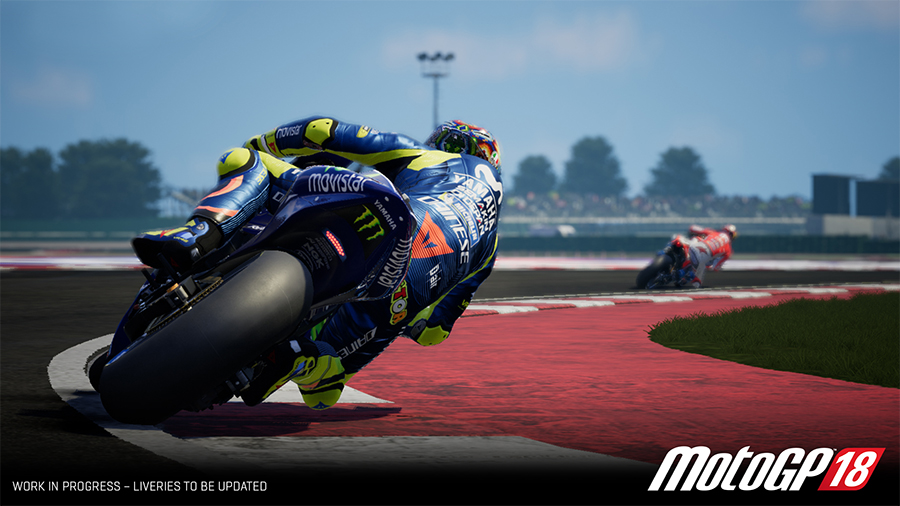
Bikes are supremely detailed too – you can even identify the Brembo brakes when examining the models up-close with the game’s photo mode. Less impressive, however, are the riders.
Last seen in Monster Energy Supercross, MotoGP 18 features new face-scanning technology that accurately replicates every rider’s face likeness. This is showcased in the game’s 30 new cut scenes that immerse you into the world of MotoGP better than previous games, showing everything from podium celebrations to pre-race preparations. MotoGP fans will recognize their favourite riders, which even have specific animations emulating their personalities – you’ll see Valentino Rossi doing his signature pre-race stretch warmups, for example. It’s just a shame the stiff facial animations make them look like disturbing waxwork figures. To be fair though, the drivers in Codemasters’ F1 games don’t look very photogenic either.
Each of the nineteen official circuits in MotoGP 18’s track roster, which now includes the new Buriram International Circuit in Thailand, also look and feel more representative of their real-life counterparts thanks to new drone scanning technology. Some tracks such as Silverstone were too wide and had inaccurate camber in previous games but this has now been rectified in MotoGP 18, making for a more authentic experience.
That said, the circuits still lack the same attention to detail applied to the bikes. Even on Xbox One X, there’s some noticeable texture pop-in. Textures also occasionally fail to load properly, particularly in replays, and trackside detail is still lacking, with unrefined scenery and 2D trees standing out as particular eyesores. TT Isle of Man: Ride on the Edge‘s fantastic foilage puts MotoGP 18’s lackluster environments to shame.
One of MotoGP 17’s biggest improvements was the upgrade to 60fps on consoles, which improved the fluidity and sense of speed significantly. Unfortunately, the move to Unreal Engine 4 reduced the frame rate back to 30fps on consoles – even on the powerful Xbox One X. Of course, this isn’t an issue for PC players who can enjoy the game at a solid 60fps, but an option to prioritise frame rate or visual fidelity on consoles like in Codemasters’ Onrush would have been welcome. Performance is solid on Xbox One X, but players have been reporting frequent frame rate stuttering on standard consoles, particularly in the rain. It’s a shame, because MotoGP 17 ran without a hitch on the base PS4 and Xbox One.

It’s not just the visuals that have been revamped. Moving to Unreal Engine 4 has enabled Milestone to completely rework the physics in MotoGP 18. As a result, the bikes have a more realistic sense of weight and increased lean angles. These changes will take time for returning players to adjust to, as you’ll need to completely relearn braking points. Nailing an apex and knowing precisely when to apply the throttle is more crucial than ever before if you want to finish on the podium.
Each bike class feels more unique than before, from the nimble and grippy Red Bull Rookies and Moto3 bikes to the potent MotoGP bikes that are more prone to understeer than last year’s game if you approach a corner too fast. There’s a steeper learning curve than previous MotoGP games, but the bikes feel more responsive, intuitive and satisfying to control once you adjust to the new riding physics. Keeping the bike planted with all assists off will challenge even experienced players.
Manual starts have also been added to MotoGP 18 for the first time, allowing you to pull the clutch while revving the engine and release it as the race starts. It sounds like a gimmick, but this adds a new tactical element for experienced players to shave a few precious seconds off the starting line.
You can no longer get away with veering off course either, as contact with the grass will cause the rear tyre to lose traction and catapult your rider off the bike. Oddly, however, crashes still don’t have any consequences. Milestone claims MotoGP 18 has a new damage system, but the bikes still look pristine and handle perfectly after multiple accidents, just like in previous games.
Weather affects the bike’s grip more noticeably than before and the rain effects look considerably better than MotoGP 17, but there’s no dynamic weather, sadly. It’s a stark contrast to the deformable tracks that change after every lap in MXGP 3 and Monster Energy Supercross. Then again, Milestone has rebuilt the game from scratch, so expecting the developer to add an advanced new feature in such a short timeframe is unrealistic. Let’s hope MotoGP 19 finally adds dynamic weather because it would add a new dimension to the series.
Bike animations also look more realistic as the suspension visibly reacts to the track surface, and the rear now weaves around under heavy braking. Sadly, the same can’t be said for the riders. Their movement is less jerky, but they remain extremely static most of the time – there isn’t even an animation when the rider changes gear.
Returning players will also notice the first-person cameras have changed since MotoGP 17. The main cockpit camera now has a fixed viewpoint and is positioned closer to the dashboard, while the helmet camera no longer restricts the view. Instead, the colours are dimmer to represent the visor and the audio is muffled to provide extra immersion. Of the two, the new helmet camera offers the most visceral experience since, unlike the static cockpit view, the camera moves around to simulate the rider’s head movement looking into the apex.
A common complaint about recent Milestone titles is the lack of tutorials for newcomers. This was particularly true in Monster Energy Supercross, an unwelcoming game with a steep learning curve requiring specific skills and techniques that were poorly explained. MotoGP 18 adds a handful of new interactive tutorials, but they leave a lot to be desired.
Limited to only three lessons, the tutorials are essentially glorified time trials requiring you to reach checkpoints within a time limit or stick to the racing line as close as possible. Assists are removed in each advancing lesson until you’re riding on pro physics, i.e. the game’s hardest difficulty level. While the tutorials help acquaint players with different skill levels to MotoGP 18’s preset riding styles (basic, normal, and pro), there aren’t any useful tips to help you improve your skills or explain advanced techniques like joint braking or tucking in.
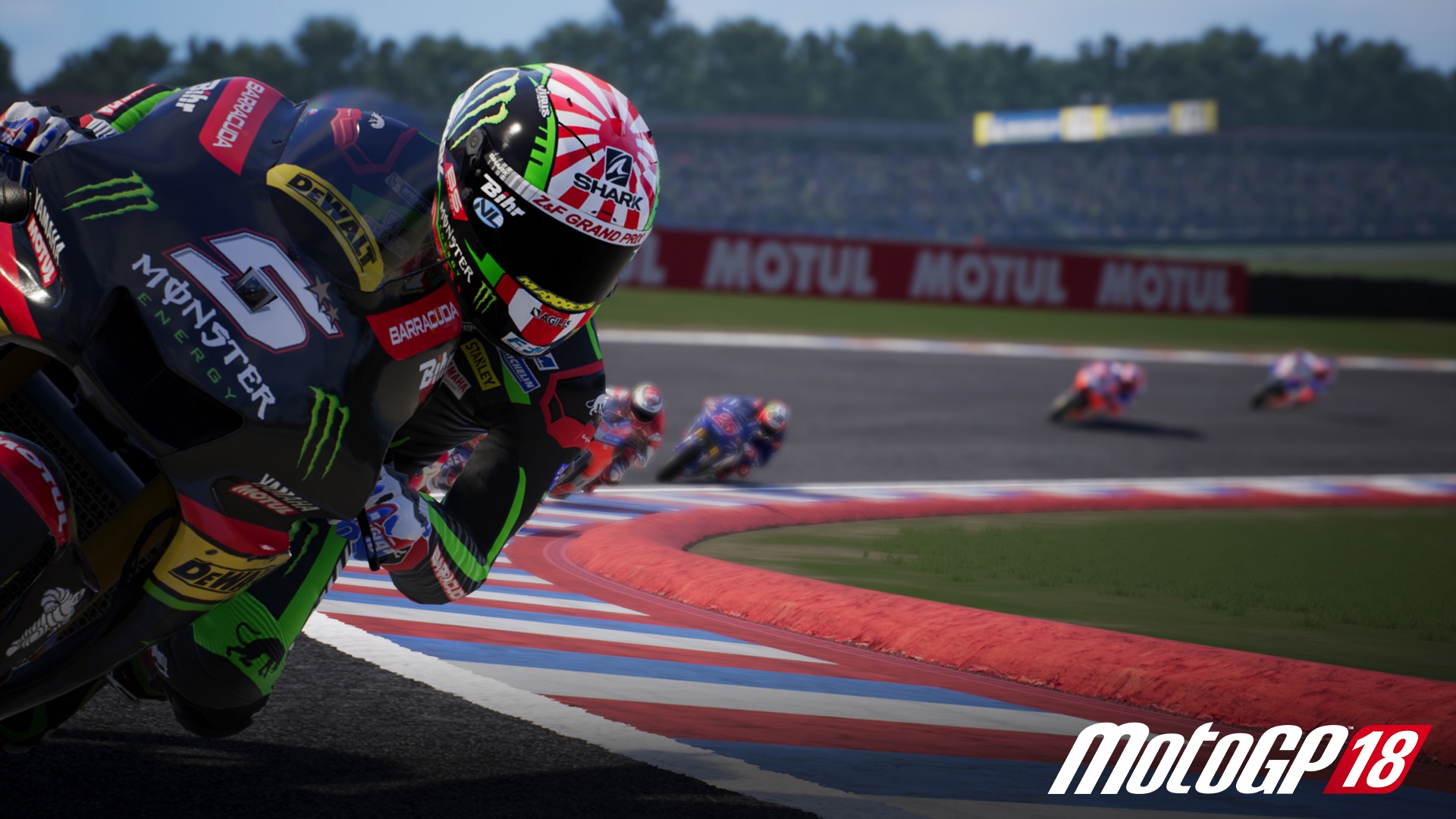
One step forward, two steps back
Unfortunately, while the upgrade to Unreal Engine 4 has significantly improved the visuals and physics, other aspects of the game have suffered. Some longstanding issues also still haven’t been addressed, making MotoGP 18 a classic case of one step forward, two steps back.
The Managerial Career mode, one of MotoGP 17’s staple new features, is missing, and while its execution was basic, it had potential. After all, it’s rare to see team management explored in licensed racing games outside of dedicated games like Motorsport Manager.
Likewise, MotoGP 17’s classic 125cc, 250cc, 500cc and MotoGP bikes and riders have also been removed from this year’s package after last year’s game was crammed with content. Don’t be surprised if the missing classic content gets added as paid DLC. Even the menus have been stripped back and lack the polish of MotoGP 17’s presentation.
This leaves you with the main career mode, which has barely changed since last year’s game aside from a few tweaks. As before, you create a custom rider (thankfully, this isn’t mandatory as soon as you start the game anymore) and rise up the ranks, starting with the Red Bull Rookies until you reach the demanding MotoGP class. Meeting team objectives will get you noticed and generate contract offers from team sponsors sent via emails. Like with Milestone’s other franchises, the career mode needs a serious overhaul, but the priority was clearly to update the game to Unreal Engine 4.

While you can’t purchase aftermarket parts, progressing through the career earns you development points that can be spent on upgrading the engine, brakes, suspension, aerodynamics, and frame, but the differences these upgrades make in-game are negligible.
Then there’s the abysmally archaic AI. Like in previous games, opponents rigidly stick to the racing line like they’re on rails. They’re completely oblivious to your track position and make no attempt to avoid you. Without fail, a couple of riders will also always be a few seconds faster and gain a significant lead ahead of the pack for the entire race.
On the upside, whereas opponents in previous MotoGP games were too slow and easy to dominate, veteran players who want an extra challenge can adjust the AI difficulty between 20 and 120 percent. It’s great to see Project CARS 2‘s level of customisation applied to other games. With the difficulty dialled up, MotoGP 18’s opponents are tougher, but not smarter, making for some insipid, unengaging racing.
Racing against human opponents online partially rectifies MotoGP 18’s lifeless AI, but it’s a very barebones experience. There’s support for up to 12 players but finding a fully populated server is rare. Sadly, the netcode is currently very unstable: server disconnections and lag hinder the online experience, and there are still no server browsers, player rankings, or filter options to select specific bike classes, circuits or turn collisions on or off. Instead, tracks are selected with a voting system after each race with up to four choices. Mercifully, Milestone has at least finally added a spectator mode to ease boredom while waiting for a race to start in a lobby. Like last year, the MotoGP eSport championship will start later this year, with the grand final taking place in November where the winner will take home a brand new BMW M240i.
Another area that could do with some attention is the audio. MotoGP 17’s revamped sound design was exceptional – hearing a full grid of bikes revving on the start line sounded as ear-splittingly loud as you imagine it would in real life. MotoGP 18’s bikes, on the other hand, sound more refined and less realistic as a result. Stadium announcers and cheering crowds increase the immersion, but it’s a shame to see the engine audio hasn’t progressed since Valentino Rossi The Game in 2016, despite the huge strides made in last year’s game. Again, compromises like these were perhaps inevitable due to the upgrade to Unreal Engine 4.

Milestone’s MotoGP series is in a similar position Codemasters’ F1 series was in back in 2015, where the upgrade to a new engine resulted in a lot of content cutbacks. Upgrading to the more powerful Unreal Engine 4 has finally revitalised the series, resulting in some radical improvements.
Inevitably, however, there have been some concessions, from the removal of classic content to MotoGP 17’s managerial career mode, and the on-rails AI needs an overhaul. Milestone arguably should have scrapped its in-house engine several years ago, but the Italian developer didn’t have the resources it has now. Despite these cutbacks, MotoGP 18 is the most significant step forward the series has made since Milestone reclaimed the rights in 2013 and serves as a solid foundation for future sequels to build on.
Our Review
The good
- First MotoGP game to run on Unreal Engine 4 bringing improved graphics
- More realistic handling will challenge veteran players
The bad
- Console versions run at 30fps
- Missing modes from MotoGP 17
- Recycled career content
- AI opponents are still on rails
Summary
MotoGP 18 is undoubtedly the best-looking and best-handling game in the series yet. Inevitably, however, there have been some concessions, from the removal of classic content to MotoGP 17’s managerial career mode, and the on-rails AI needs an overhaul. Milestone arguably should have scrapped its in-house engine several years ago, but the Italian developer didn’t have the resources it has now. Despite these cutbacks, MotoGP 18 is the most significant step forward the series has made since Milestone reclaimed the rights in 2013 and serves as a solid foundation for future sequels to build on.



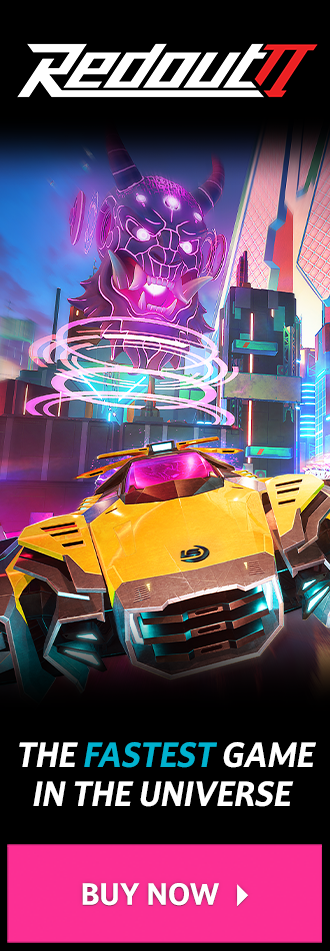











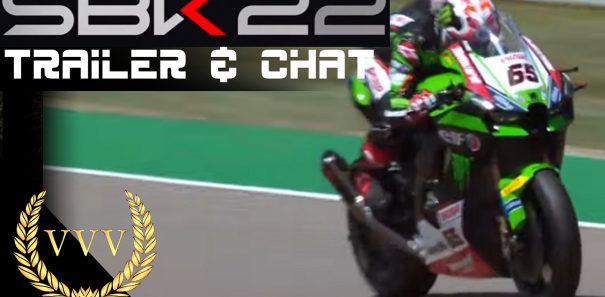


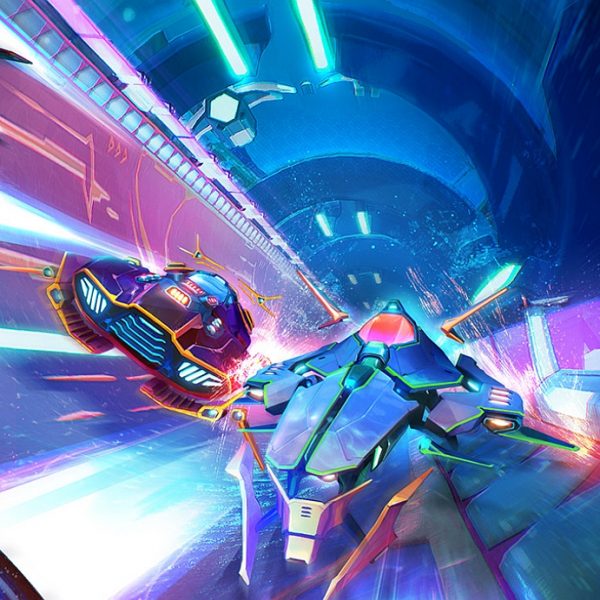








no classic content yet 🙁
Reviews are very mixed on Steam and I have far too many car sims to play so this is another sale only purchase for me.